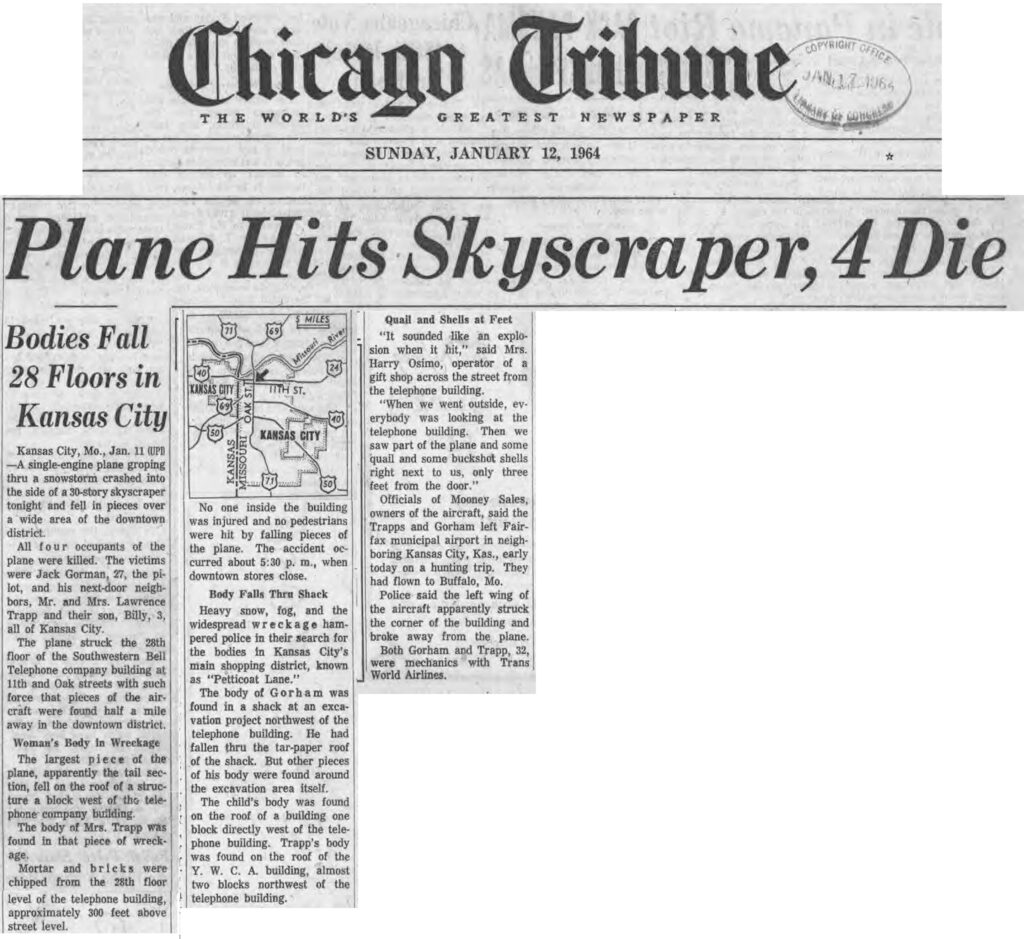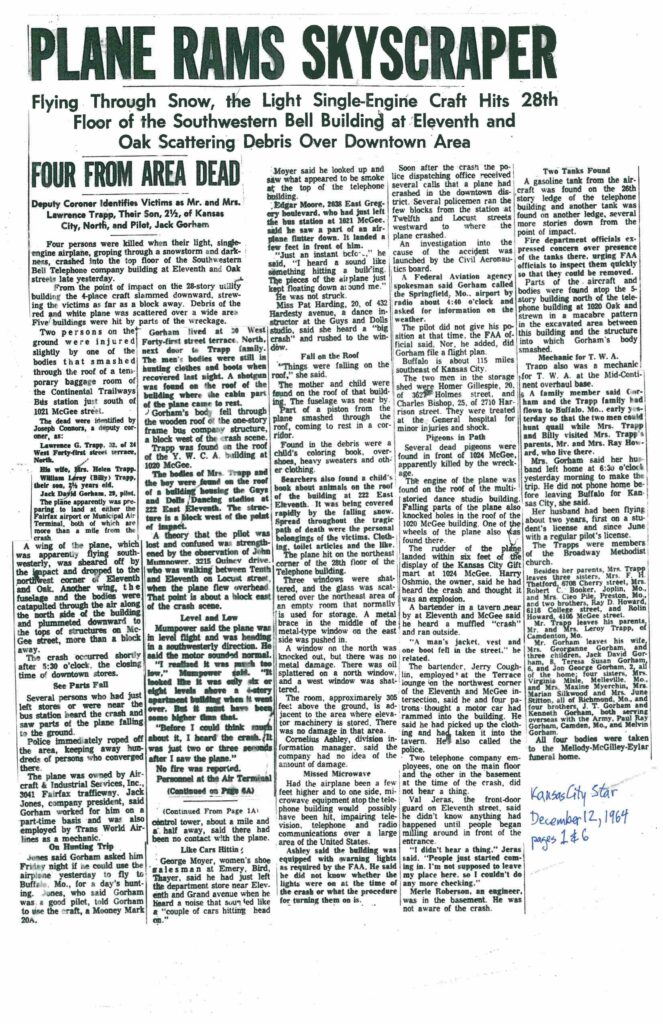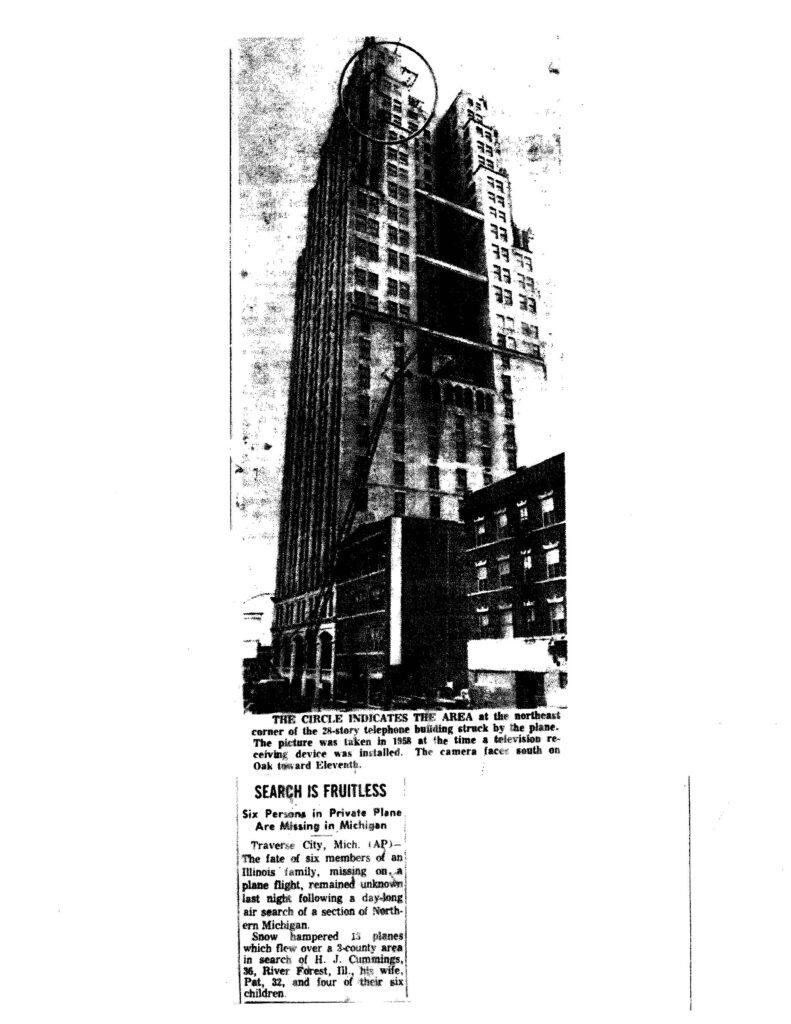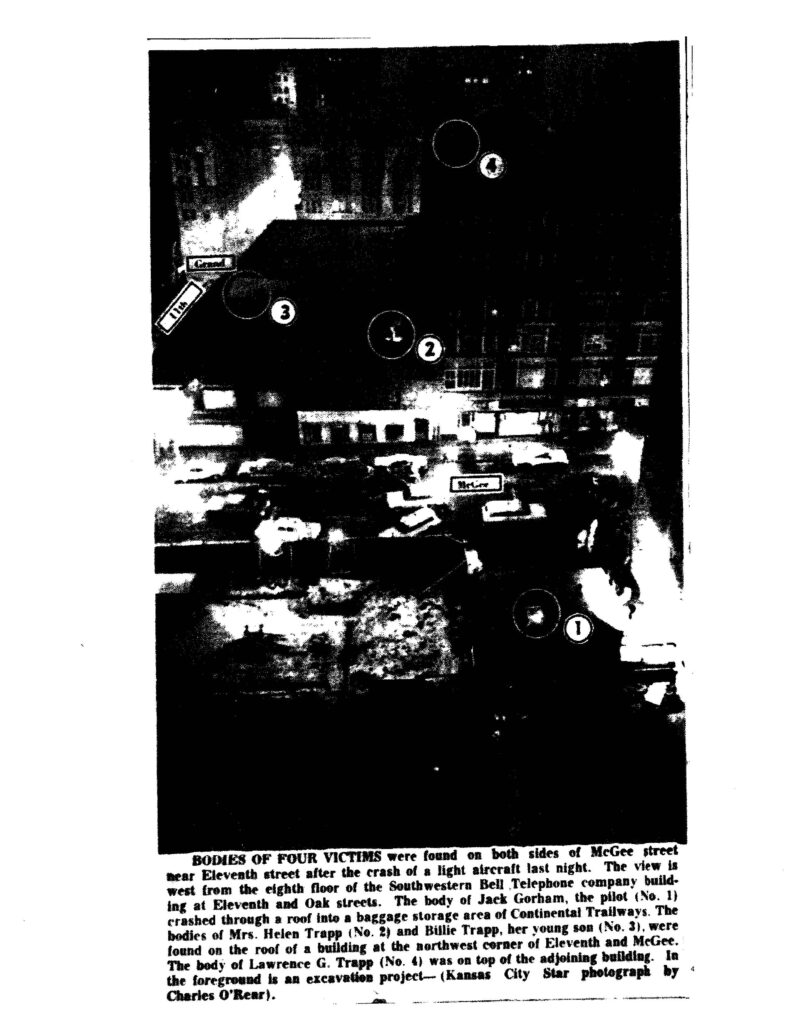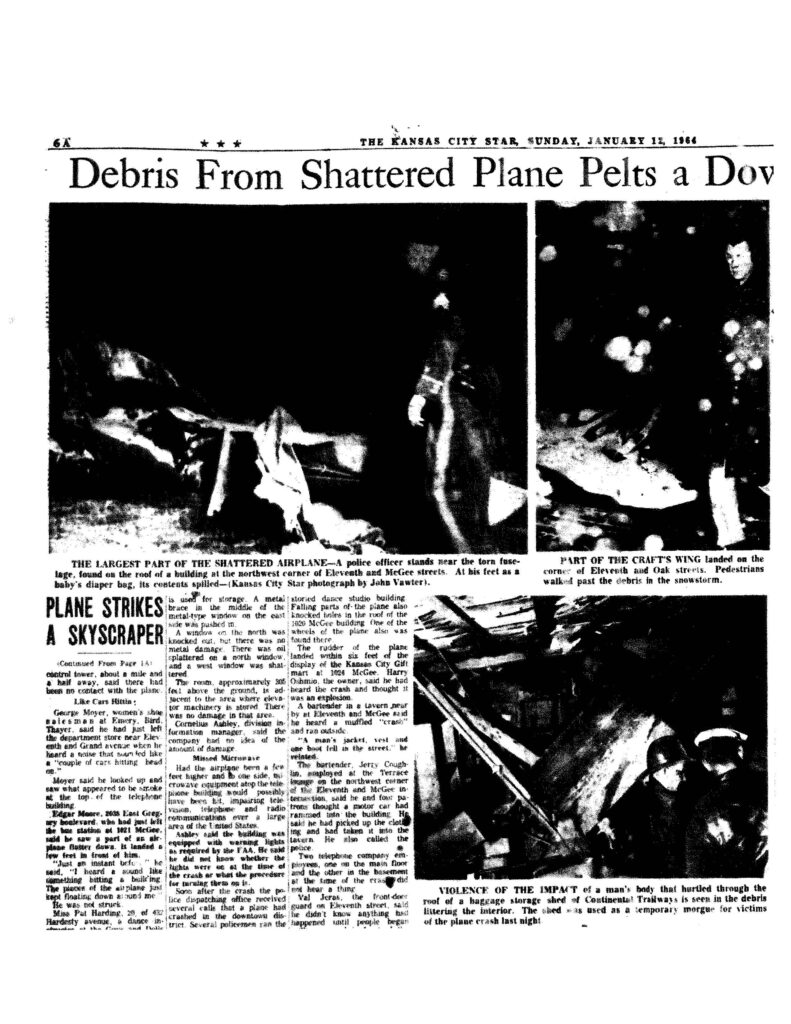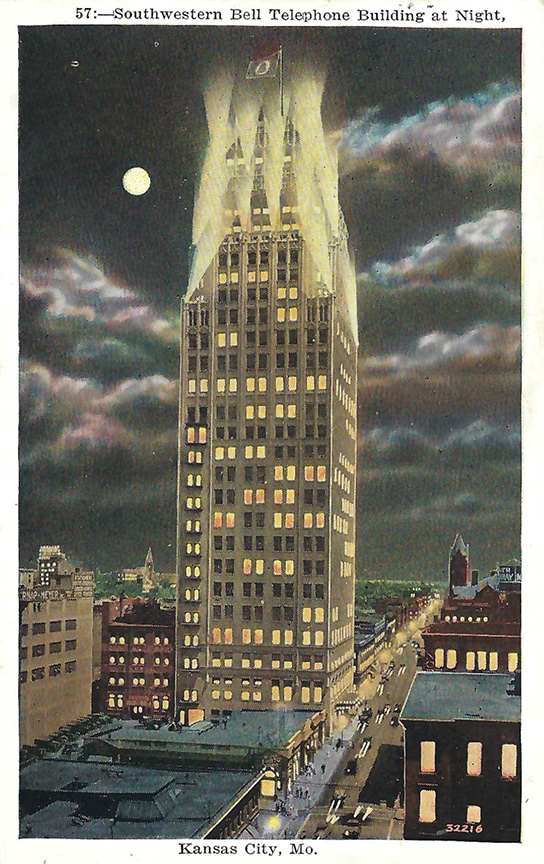
Michael Bushnell
Publisher
This week we feature three postcards spotlighting the Southwestern Bell Telephone Building at 11th and Oak streets. A colorful night view from the linen postcard era published by Max Bernstein, a sepia tone postcard published by John Straley – who ran his photography studio out of his apartment at 213 N. Mersington Avenue here in Historic Northeast – and a hand colored postcard published by Hall Bros., the precursor to Hallmark Cards.
At one time, Kansas City was serviced by two telephone companies. The Home Telephone Company and the Alexander Bell Network both provided services to Kansas City businesses and residents.
When the Bell Company was organized in 1883, few Kansas City homes had telephones. By the turn of the century, each of the two vendors boasted roughly four miles of cable and around 20,000 subscribers. The two companies merged in 1919 to form the Kansas City Telephone Company.
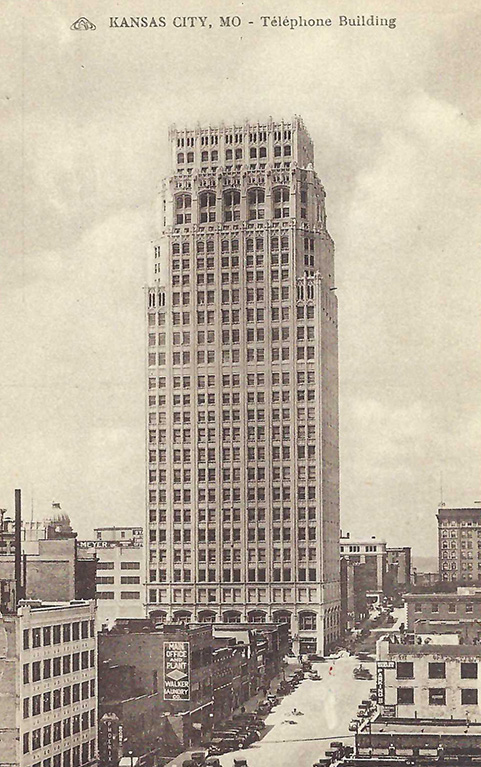
Two years prior to the merger, however, ground was broken at 11th and Oak on a 14-story building built expressly for the telephone company. Manpower was scarce at the time due to the onset of World War I, delaying the completion of construction to May of 1920.
Business for the company boomed following the war, and by 1928 the decision was made to add an additional 14 floors to the top of the ornate structure. Construction was completed in 1929, making it the tallest building in the state of Missouri until the completion of the Art Deco-style Power and Light Building at 14th and Baltimore streets.
The newly constructed addition was built with Haydite, a new structural concrete developed by Stephen J. Hayde that was lighter than standard structural concrete. The new construction material was patented and invented here in Kansas City. Using the new material allowed for the addition of six more floors over what would have been possible with standard ready-mixed concrete.
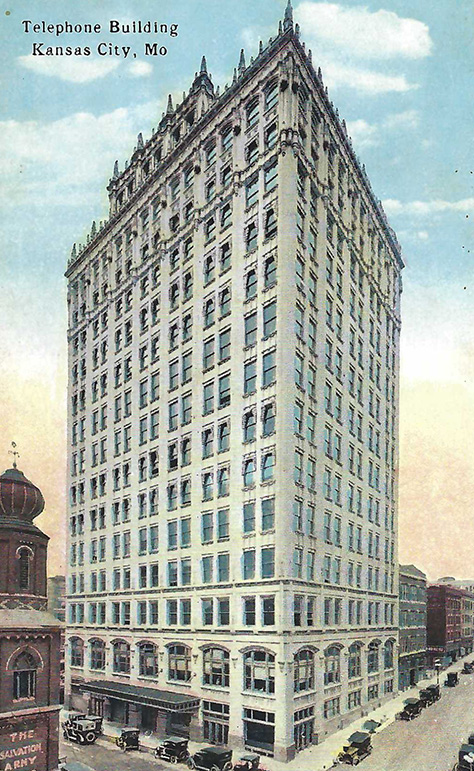
During a January snowstorm in 1964 a single engine plane crashed into the 28th floor of the building, scattering debris and body parts over an almost five block area of downtown. The crash killed all four people on board the plane. The victims were Jack Gorman, the pilot, and his nextdoor neighbors, Mr. and Mrs. Lawrence Trapp and their three year old son Billy, all of Kansas City. The group was returning from a hunting trip to Buffalo, Missouri.
During the 1970’s, it was a common practice to “update” older buildings with more ornate architecture by making it appear more sleek and clean. Sadly, in 1974, the owners of the beautifully, Henry Hoit designed structure opted to cover the building with smooth, stucco panels, hiding the beautiful architectural elements. A keen eye however can still spot the decorative arches and a few stray decorative elements left uncovered. The now architecturally cringe-worthy structure functions as a primary switching station for AT&T and other communications carriers.
